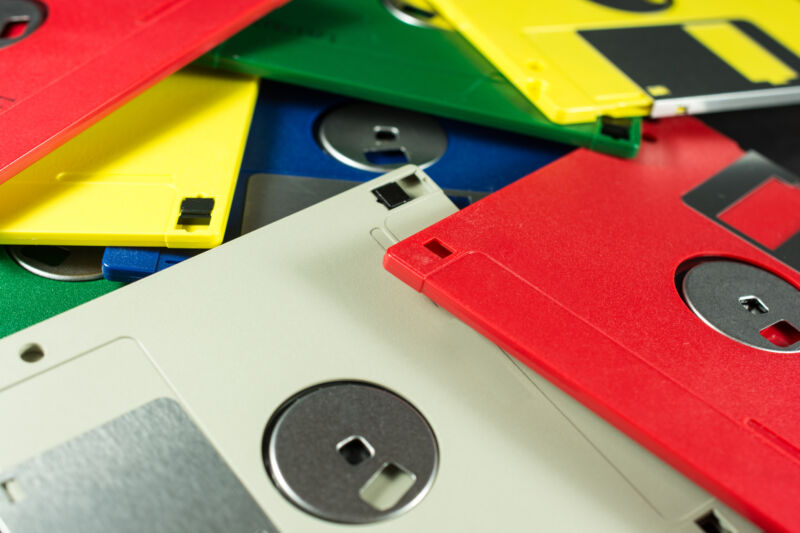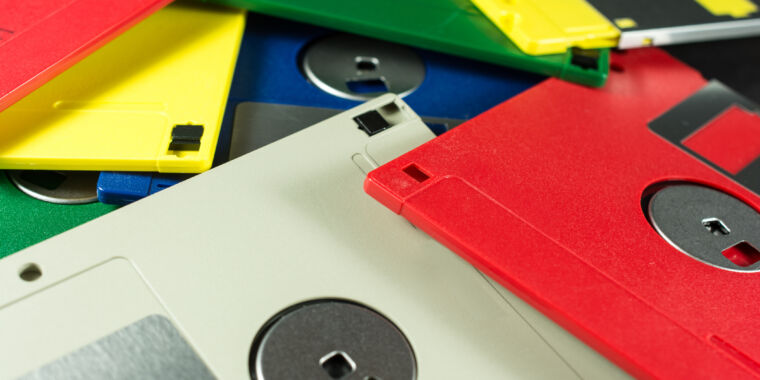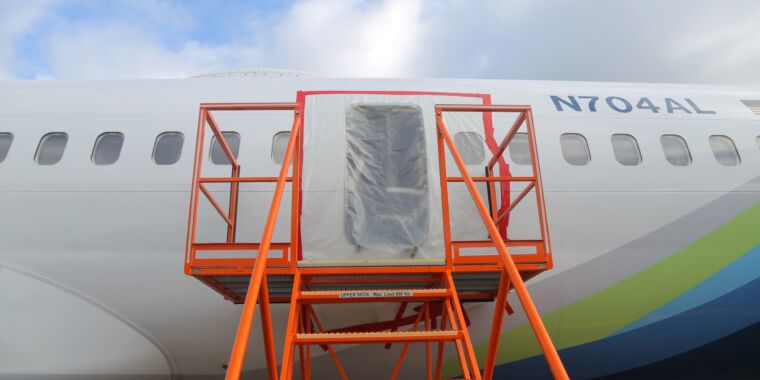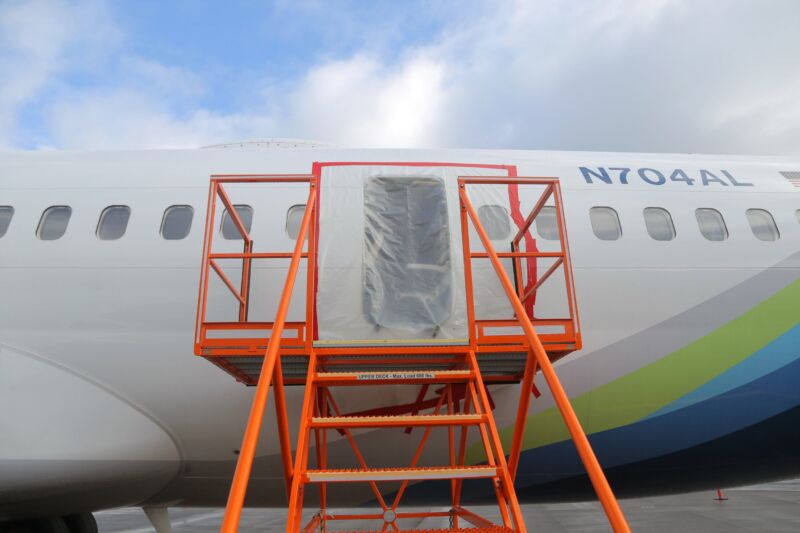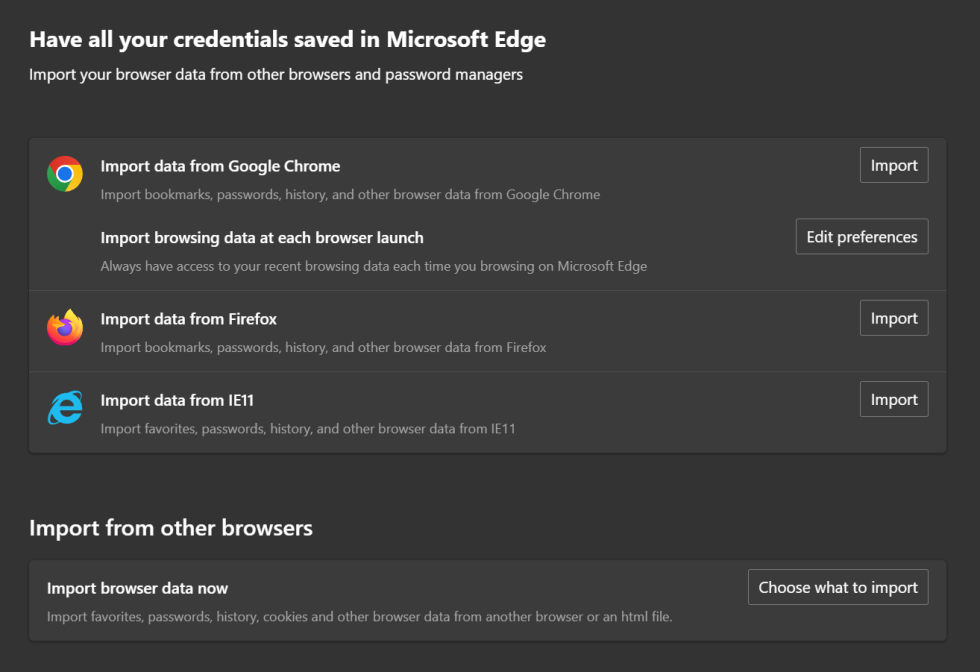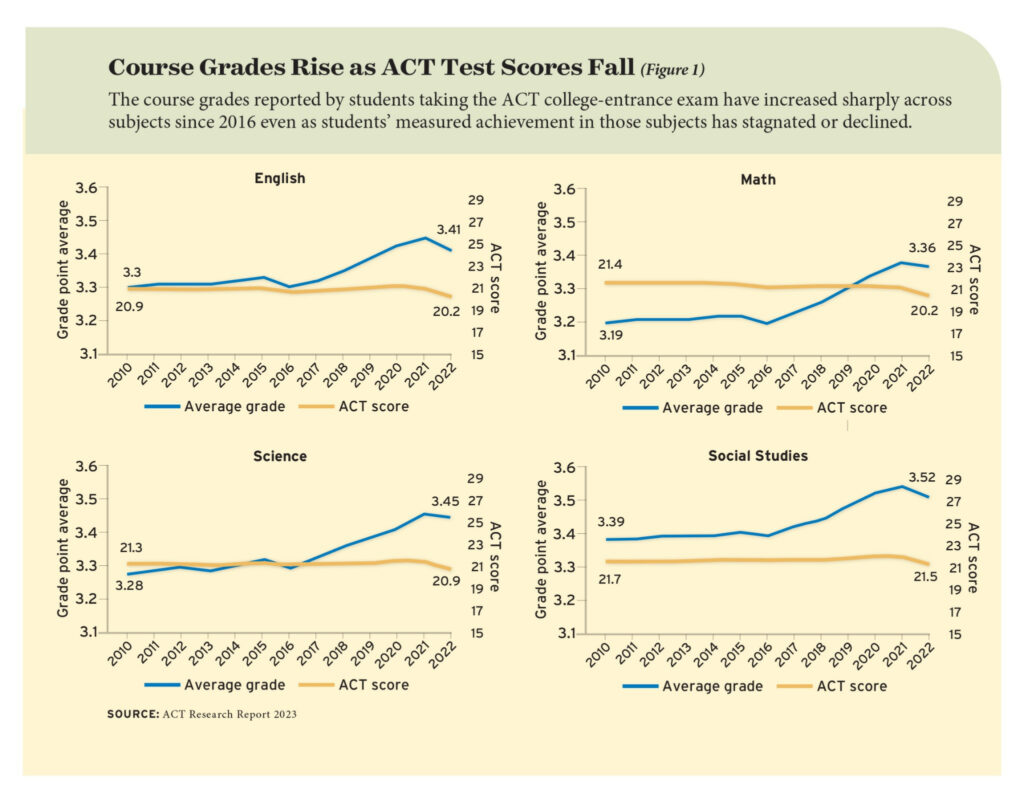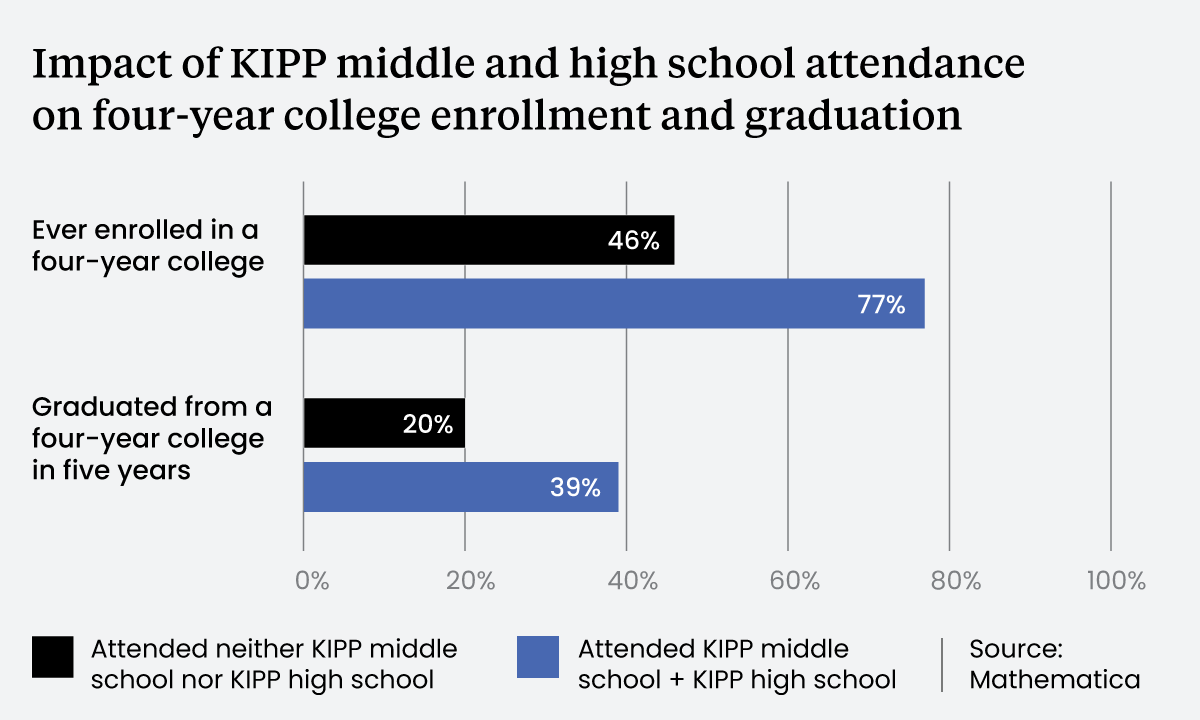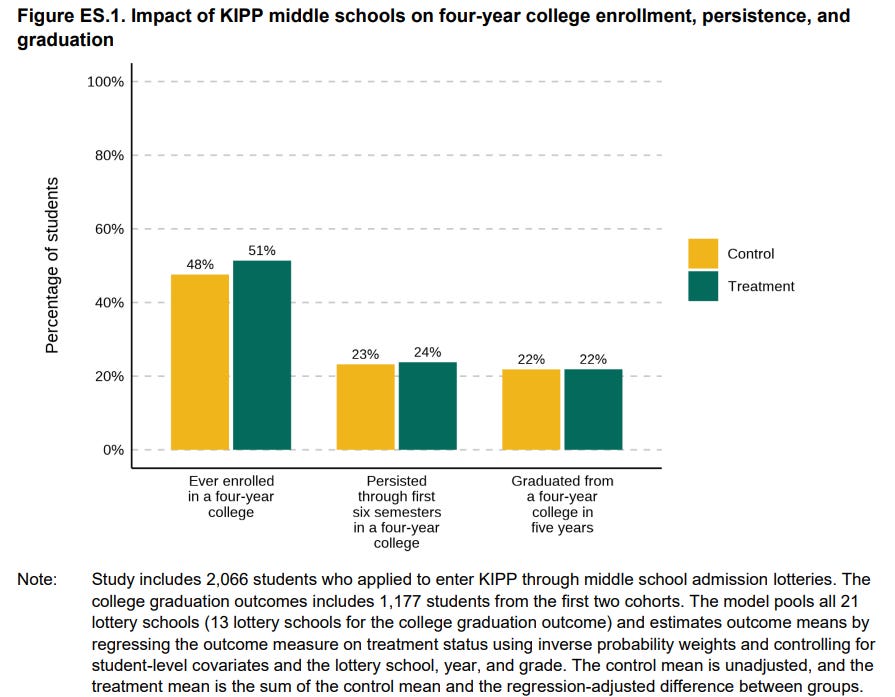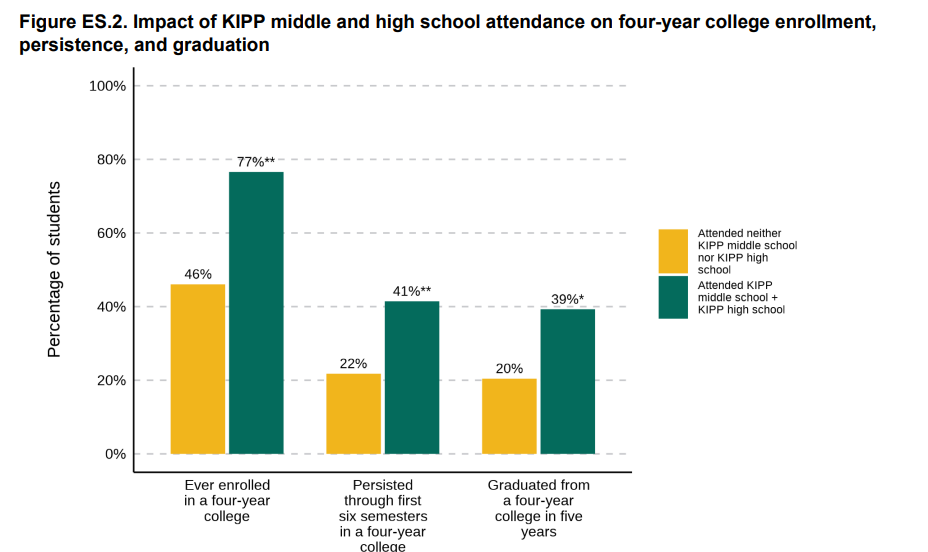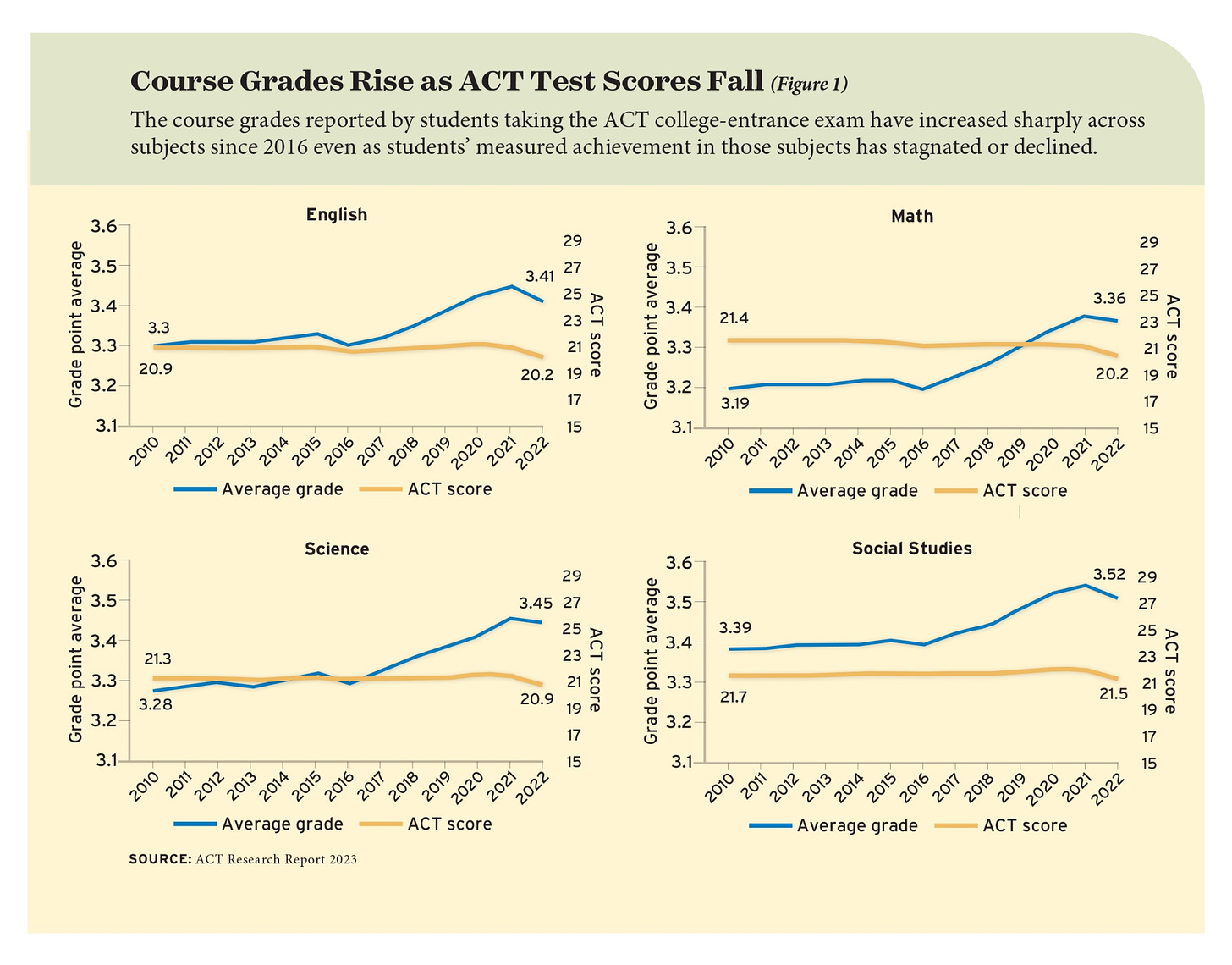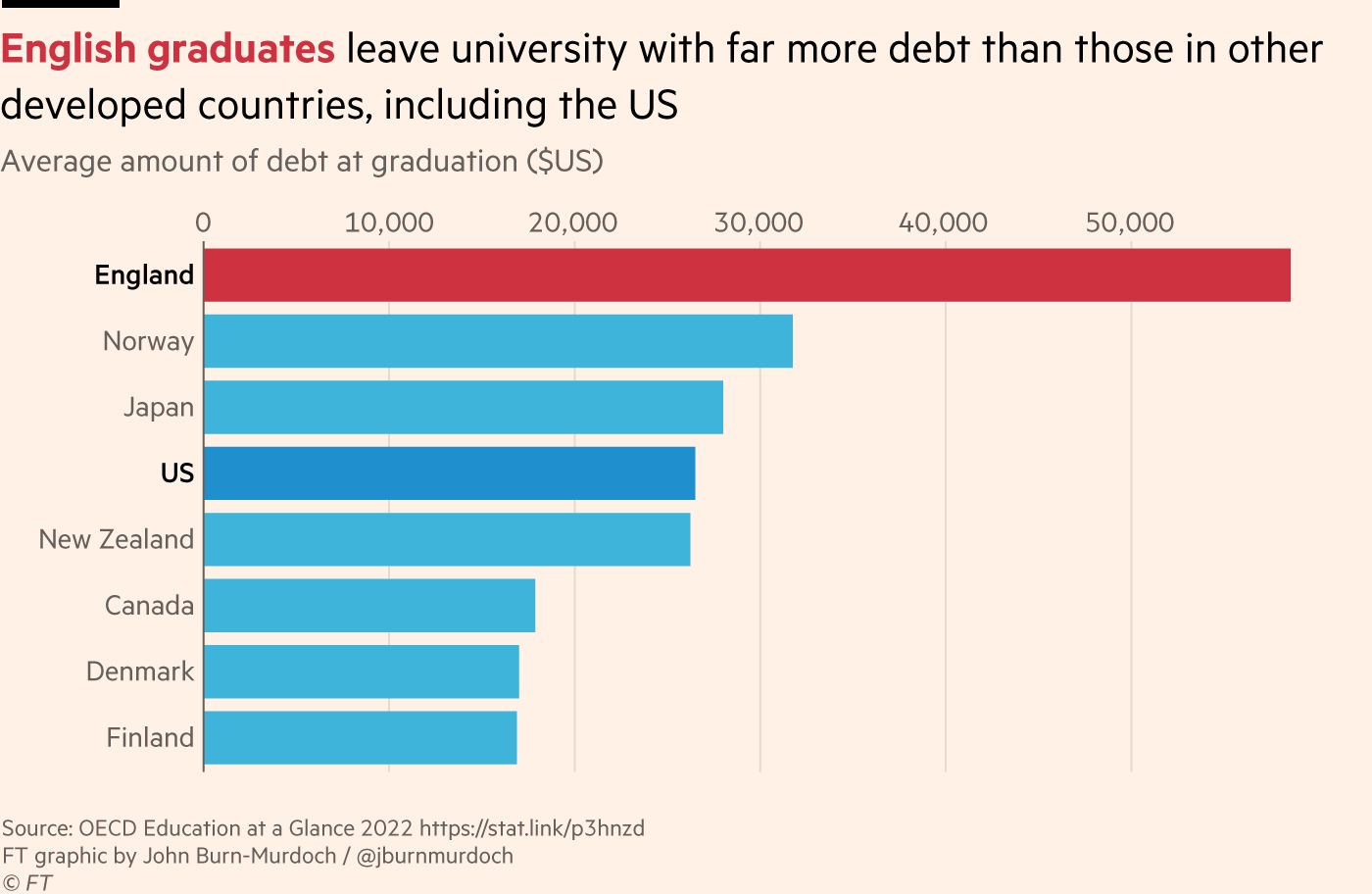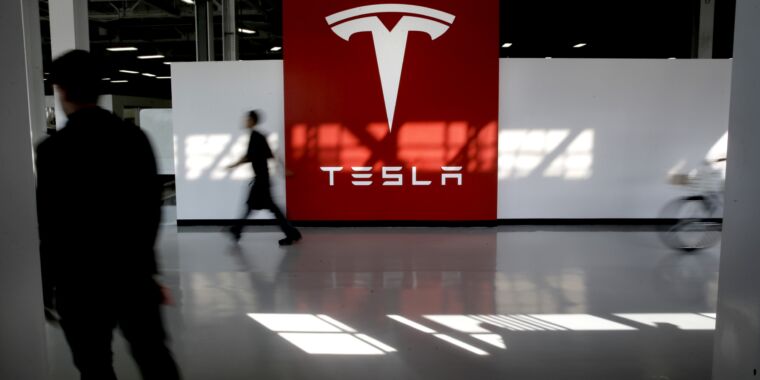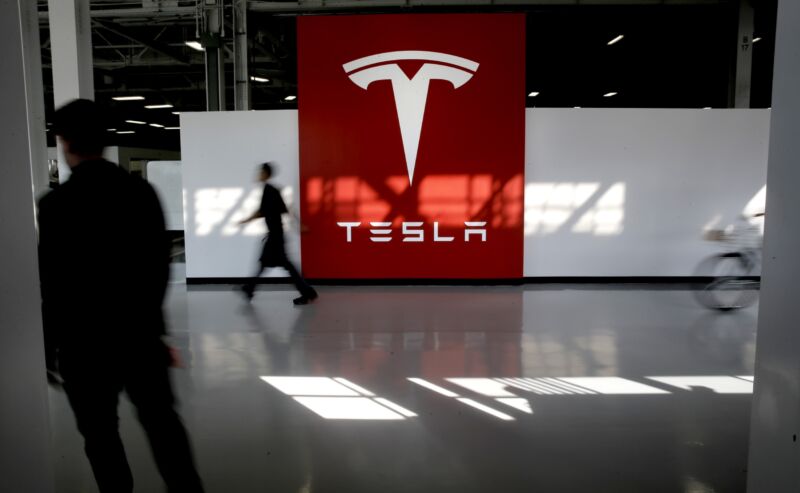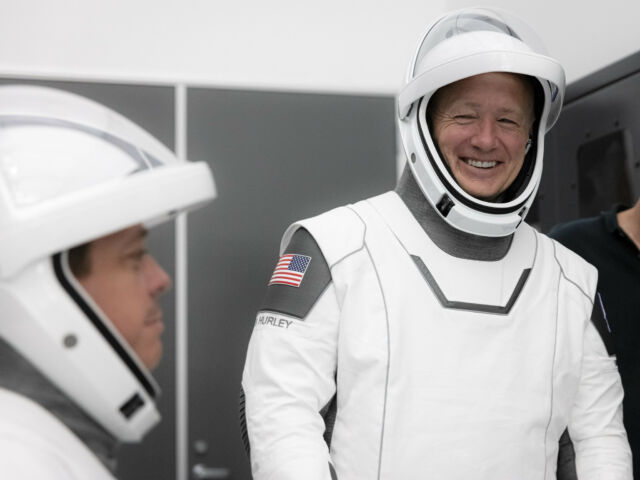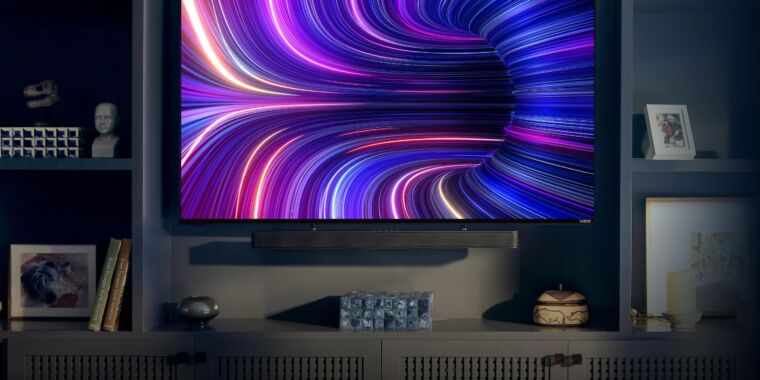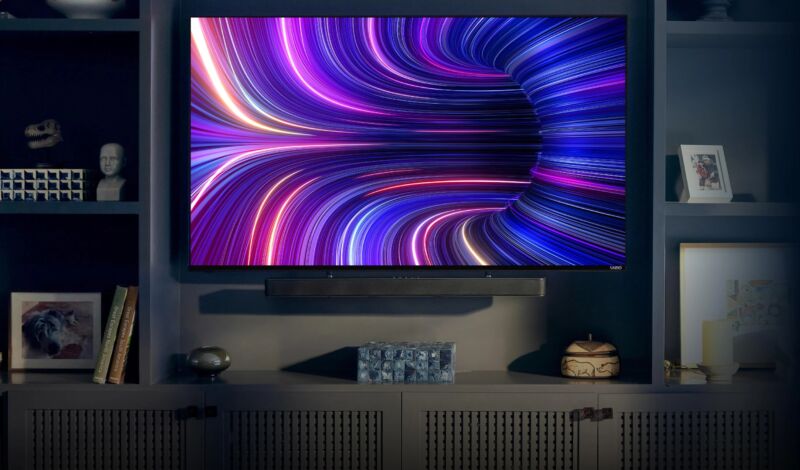Before we begin, I will note that I have indeed written various thoughts about the three college presidents that appeared before Congress and the resulting controversies, including the disputes regarding plagiarism. However I have excluded them from this post.
Washington Post Editorial Board says schools should ban smartphones, and parents should help make this happen rather than more often opposing such bans in order to make logistical coordination easier.
I agree with the editorial board. Even when not in use, having a phone in one’s pocket is a continuous distraction. The ability to use the phone creates immense social and other pressures to use it, or think about using it, continuously. If we are going to keep doing this physically required school thing at all, students need to be fully device-free during the school day except for where we intentionally want them to have access. Having a phone on standby won’t work.
The Netherlands is going to try it for January 2024, including all electronic devices.
Jonathan Haidt, man with a message, highlights Vertex Partnership Academies, which locks all student electronic devices away all day and claims this is a big win all around. They say even the kids appreciate it. With phones available, other kids know you have the option to be on your phone and on social media, so you pay a social price if you do not allow constant distraction. Whereas with phones physically locked away, you can’t do anything during school hours, so your failure to do so goes unpunished.
Some old school straight talk from David Sedaris. He is wrong, also he is not wrong. He is funny, also he is very funny.
This explanation is one more thing that, as much as I hate actually writing without capital letters, makes me more positive on Altman:
Sam Altman: mildly interesting observation:
i always use capital letters when writing by hand, but usually only type them when doing something that somehow reminds me of being in school.
And of course, your periodic reminder department:
Alyssa Vance: In California, it is legally rape for two high school seniors to have consensual sex with each other. This is dumb, and people should be allowed to say it’s dumb without being accused of coddling rapists.
I do not pretend to know exactly what the right rules are, but this is not it. If there is no substantial age gap, it shouldn’t be statutory rape.
A disobedience guide for children, addressed to those facing physical abuse. The issue is that children mostly only have the ability to inflict damage. You can break windows, or hit back, or tell people you’re being abused, or run away, or otherwise make the situation worse to get what you want. A lot of unfortunately this is a symmetric weapon. A child can inflict a lot of damage and make life worse if they want to do that, and can do that with any goal in mind however righteous or tyrannical. The asymmetry hopefully arrives in a selective willingness to go to total war.
Bad stuff that happens to you in childhood makes you a less happy adult (direct). Bad stuff here includes financial difficulties, death of a parent, divorce, prolonged absence of a parent, health issues, bullying and physical or sexual abuse. Definitely a study I expect to replicate and that we mostly did not need to run, yet I am coming around to the need to have studies showing such obvious conclusions. People are often rather dense and effect sizes matter.
The effect sizes here seem moderate. For example, divorce was associated with an 0.07 point decrease in happiness on a scale where very happy is 3 and not too happy is 1. That’s a big deal if real, also not overwhelming.
What worries me are the controls. Adverse childhood events are often not accidents or coincidences. Associating bad events with bad outcomes does not tell us much about how much of that relationship is causal. I do not find the additional variables in their regression models to be doing enough to capture the hidden variables.
That was me being polite. The top comment at MR rips into the paper and writes it off as useless, pointing out all the bad outcomes and causes are correlated.
We constantly face the clash between the story of nature, where genetics is claimed to overwhelmingly be the main determinant of outcomes and who claim to back it up with robust statistics, and nurture, where we can look at or talk to people and see the obvious impact of the events in their lives, and who are now trying to back that up with statistics. Genetics obviously matter a lot as any parent of multiple children knows, but also the events that happen doubtless matter a lot too. I would expect very bad outcomes from any parents who actually believe otherwise. Luckily, as in the case of Bryan Caplan who clearly puts in tons of mindful effort, this does not seem to often translate into actually acting as if the other stuff doesn’t matter.
A different kind of choice: Letting children skip grades causes gifted (top 1% in math) adolescents to earn more doctorates, publish mor papers, file more patents, and do it all at earlier ages.
Emmett Shear: Anecdotally, from knowing many close friends who skipped multiple grades, the primary impact seems to be academic. Grade-skippers seem to excel in school, but at the cost of other areas of achievement. Which makes sense because you’re ramping academic difficulty.
My anecdata is that everyone I know who skipped grades came out far the better for it, and we should do vastly more of this. The whole ‘emotional development’ form of argument seems crazy to me. Why would you want to take such a child and force them to ‘emotionally develop’ with dumber children their own age?
Ideal of course are schools that track each subject on its own, so you can skip kids around as appropriate and avoid boring them out of their minds.
Sweden’s schools minister declares their free school system a failure. Why? The schools have gotten international acclaim, but recently performance is on the decline, so she is blaming the possibility that someone, somewhere might be earning a profit. There is wide declaration that ‘joint stock companies are not a long-term sustainable form of operation to run school activities’ as the union claims. But, again, why? What makes this different from all other services?
The core justification is that the state of paying, and this allows profit from spending less and providing poor quality education. But if that is the case, why not compete by offering a better school that is still profitable? No explanation is given.
Gated paper claims private school competition is very good for public schools, ungated working version here.
Abstract: Using a rich dataset that merges student-level school records with birth records, and leveraging a student fixed effects design, we explore how a Florida private school choice program affected public school students’ outcomes as the program matured and scaled up.
We observe growing benefits (higher standardized test scores and lower absenteeism and suspension rates) to students attending public schools with more preprogram private school options as the program matured. Effects are particularly pronounced for lower-income students, but results are positive for more affluent students as well. Local and district-wide private school competition are both independently related to student outcomes.
This could easily have gone the other way. We have two stories:
-
Private schools steal resources and the best students from public schools.
-
Private school competition forces public schools to get their act together.
Everything in the left-wing, anti-market, statist and collectivist perspective says story one is a nightmare and story two is not a thing.
Everything in the pro-market, pro-freedom and standard economic perspective says story two should dominate, although the selection effect is still a concern.
It is correct to update quite generally, if this finding holds up.
Los Angeles Zones of Choice (ZOC) allowed some students to choose which school to attend, paper finds student outcomes improve markedly in proportion to the amount of competition faced by schools. Whatever one thinks of vouchers, letting students choose between different public schools seems obviously beneficial.
Matt Yglesias makes a case against school choice, arguing that school choice would create a competition for prestige and to attract the best students, similar to that among top colleges. And that this… would be bad. That this would come at the expense of results.
Scott Sumner: Yes, there’s a danger that the school choice movement could make our K-12 system of education as successful as Harvard. But I’m willing to take that risk.
The basic argument is that what makes school work is things like ‘boring drill,’ that Washington is going to hold schools accountable and ensure they produce good results, whereas school choice would not hold schools accountable for good results.
That all seems pretty crazy. If you wanted to steelman the argument and consider it properly, what are the mechanisms that might make this happen?
-
Children would have a say in which school they choose, and they would tend to choose schools where they will do worse.
I find this highly unlikely. I do not think that in general students want to go to ‘easier’ schools, or ones that teach them less well. Nor do I think they ultimately have that much of the decision making power at such ages.
-
Parents would have a say in which school they choose, and they would choose schools based on factors that anti-correlate with results.
What would those factors be? Is the worry that they will choose schools that spend their budget or time on signaling wokeness (or anti-wokeness)? That focus on looking nice or on fooling the parents in other ways or tell them what they want to hear? That the schools will try to create lifestyle convenience for parents, in ways that we don’t think should factor in? Or is it the prestige thing?
This is some combination of preference falsification, saying parents (or children) will choose in ways we dislike, and also that they will be fooled and choose wrong.
I think that parents will care about outcomes in math and reading at least as much as the state does. I am confused why you would not expect this. Yes, they might also care about other things, but that should not be a problem. Competition should improve math and reading outcomes here.
-
Parents will do a relatively poor job evaluating school academic performance.
Unlike with colleges, it is feasible to measure incoming and outgoing skill levels in such matters, and also the parents get to observe student outcomes and talk to each other.
Meanwhile, the baseline is that the state essentially doesn’t evaluate. Low performing schools do not lose students. They do not close. High performing schools do not gain students. They do not franchise. Why should we expect selection here to be worse than that? Sounds absurd.
-
Prestige and sorting concerns will be destructive.
Yglesias frames this as a conservative would-be worry, citing comparisons to Harvard. The thing is that conservatives very much do not object to Harvard sorting the best students from the worst students. What they object to is that Harvard has various fingers on various scales, both in admissions and in what is taught and by who.
Also, Harvard doesn’t matter, and is not typical. It is the extreme outlier or outliers. All colleges, obviously, feature school choice, you can go wherever. Most college students go to a state or local college. And also they have flexibility in what they can and will charge, they pass on the expenses, and no one is measuring educational outcomes or much caring about them. There’s no reason to think this will translate.
Most important is the role of distance. If I got into Harvard, I would have gone, no matter where I lived at the time around the world. If I got into Harvard Middle School, would my family have moved for it? If it had the same impact on life outcomes as Harvard College and the alternative was where I actually went, then I think they would have, but again that’s an extreme case. If they could instead send me to Columbia Middle School and keep their lives and jobs since it was a mile away from our apartment, they’d definitely have chosen that.
Distance will still matter a ton. This will severely limit prestige spirals caused by school choice rules. You don’t need to fight for selection effects against that many other schools in most places.
You know who does get massive selection effects? The places that provide great schools and then use real estate to price out everyone who is not rich. They get this benefit. Allowing neighboring students to crash such parties would reduce, not amplify, such effects.
The other choice is home school.
Chrisman: When friends start homeschooling they are invariably shocked at how little time is needed for academics. School just fills the time.
Ryan Briggs: This stunned me during Covid. We accidentally did ~2 years of the curriculum in under a year doing 1 hr/day of focused work
What is odd to me is that everyone finds this surprising. Didn’t they all go to school? I member. All that time spent looking at the clock, staring out the window, listening to teachers drone on or talk to other students. Dealing with discipline issues and administrative tasks. Moving between classes. Teaching things you already knew, over and over again, with or without minor variations.
So why is being able distill this activity down dramatically so surprising? One hour a day being good enough to learn at twice the usual overall rate does exceed my baseline prediction, but a dramatic improvement being possible seems obvious.
Among people I know, it is essentially assumed that home school focused on academics using a dedicated teacher who knows what they are doing (let alone proper aristocratic tutoring) would blow away any school on academics.
With the advent of ChatGPT, that should only become more true, assuming regular schools do not adapt so well to it.
A study of 2k children allocated via lottery to attend or not attend one of 280 charter schools showed dramatic long term impact from KIPP (Knowledge is Power Program) charter schools if and only if the kids stay from middle through high school.
John Arnold: Results released today of a new study following the long term impact of KIPP charter schools are incredible and highly policy relevant.
One of my critiques of program evaluations is they tend to judge short term measures (like test scores) when what matters is long term outcomes (higher ed completion and income). So we @Arnold_Ventures sanctioned the 1st study to follow kids who attended a KIPP charter school for 10 years.
While earlier research showed kids who attended a KIPP middle school had significant improvements in test scores, this study shows that kids who subsequently did not attend a KIPP high school only had minimal improvement in college attendance and completion.
But for kids who attended both a KIPP middle and high school, the impact was enormous: nearly doubling the % of kids who graduated with a 4-year degree. As the researchers wrote: “An effect of this size, extrapolated nationwide, would be large enough to nearly close the degree-completion gap (for Black and Hispanic students).”
Why the very large impact? Students who attended a KIPP high school received college prep coursework (including AP classes) and wrap-around supports to and through college. I suspect many other schools did not do the same. Given most of the students come from first-gen college households, receiving these supports in school has enormous value.
But it’s also true not every student wants to attend a 4-year college. Indeed, even at KIPP the majority of students did not earn that degree. KIPP has since enlarged its mission to prepare kids not only for college but also for a career or military service.
The role of K-12 should be to prepare students to be successful in life, whatever they desire to do. In my opinion, KIPP does this as well if not better than any large operator. That some states still fight their expansion is outrageous.
KIPP combines many of the obvious things one would be inclined to try if you thought the solution was More School and to School Harder. Kids get longer hours, more homework, get called upon more, get stricter discipline, face AP and other advanced classes.
Did this matter? If it was only the middle school, not so much:
Slightly more kids entered college, but all the extra enrollees failed to graduate, so treatment here had minimal net impact. To get the impact, you have to stay in the program, this is the finding Arnold was quoting:
The problem is, if both of these graphs are accurate, what would the fourth graph look like, covering students who did the KIPP middle school but not the high school?
We can do the math. 47.6% of the control group enrolled in a four year college. 51.4% of the treatment group (middle school admission) enrolled in a four year college. 76.6% (!) of those who attended KIPP middle school and high school enrolled in a four year college. 36% of the treatment group attended a KIPP high school. Which means 37.2% of the KIPP-for-middle-school-only group went to a four year college.
That is much worse than the control group. Presumably this means that KIPP high school is a strong selection effect, since I doubt KIPP middle school on its own massively backfires. It likely does backfire on a small subset of kids who can’t or don’t want to handle it, most of whom do not proceed to KIPP high school.
If given the opportunity, should you send your child to a KIPP middle school with the option to go to a KIPP high school?
If your goal is to get them onto the strict academic track, you think the family can handle and support that and the alternative is a public school, and you are willing to make the quality of life sacrifices involved in not letting your kid be much of a kid for a while, it seems hard to turn down the resources involved. It makes sense to think you can beat the odds.
The net benefits for all children, however, including from the high schools, do not seem to be clearly different from zero. Probably a lot of families do not know what they are getting into, or fool themselves into thinking they can handle it.
Nate Silver points out this fun little passage, in a piece mostly making terrible justifications for school closures under Covid:
Nate Silver: TFW the motivated reasoning hits so strong and you’re so terrified to admit that critics of school closures had a point that you start going with “School is bad, actually”.
John Ehrenreich (Slate): Schools have a darker side. At school, children may face sexual assault and harassment and racism. One in five high school students reports being bullied on school property. Schools create stress over academic performance, pressure students to fit into normative gender roles, force invidious social comparisons on children, and conjure up feelings of failure and shame and humiliation over academic failure. Perhaps as a result, a recent Yale University study reported that nearly 75 percent of high school students’ self-reported feelings related to school were negative. Other studies show that teen suicide rates are highest during the months children are in school and lowest during the summer.
Those are not the main considerations one would note if taking the question ‘is school bad, actually?’ seriously. But it is important to note that school should not be assumed to be good and a benefit, rather than bad and a cost. By default it is an expensive thing (in time and money and coercion) that generates benefits. During the pandemic, in practice, the alternative was ‘remote learning’ which was the worst of all possible worlds. Compared to that, school in person is clearly good and a benefit, as would be doing nothing. But compared to a more enlightened alternative, this is far less clear.
Babies need people, not devices. Stop giving them screen time. Easy for her to say, but also yes. This seems clear. Being a parent has made it abundantly clear that screen time must be minimized, even when the uses are ‘educational’ or otherwise curated, that too much of it too early is not healthy.
Such screens of all sizes are also, of course, immensely useful to you, the parent. With all the demands placed on parents now, some compromise on this will be necessary. And I wouldn’t be terrified of the television being on, or anything. But, yeah.
Somehow the statistics get worse every time on what kids are allowed to do. A survey found half of parents of 9-to-11 year olds won’t let their kids go to another aisle at the store. Utter madness.
We have a natural experiment proving teacher preparatory programs are useless.
Daniel Buck: NEW DATA: 5,800 teachers received emergency licenses during the pandemic.
Their students showed the same👏🏼exact👏🏼growth👏🏼in reading and math as their traditionally trained counterparts
Why do we still have university teacher prep programs exactly?
It was actually strictly better by some metrics people care about:
Calder report, Abstract: Relative to the novice teacher workforce before the pandemic, Temporary CE teachers were substantially more diverse without any significant effects on teacher performance or student test scores.
Matthew Yglesias has a gated write-up, in which he notes this is consistent with prior research, which makes it even crazier that we went back to the requirements.
In New Jersey, he notes that those teachers also included many who had actively failed a certification step in the past. If people you are rejecting do as well as the people you accept, in a profession with a perpetual labor shortage, maybe stop that.
Paper claims having male teachers in primary school in Finland was greatly beneficial to students of all genders. It is based on the natural experiment that there used to be quotas to ensure 40% male teachers, then the quotas went away.
Patrick McKenzie presents: Adventures in American math education:
Problem: Cindy has less than ten $5 bills in her pocket. How much money could she have?
Lillian (9): … Any amount.
Me: That’s my girl! Now, to write some math fanfiction.
(Lillian’s rationalization included a) most money isn’t bills, b) Cindy could have yen or something, c) didn’t say anything about $1 bills so can have as many as she wants and d) most money isn’t in a wallet because Cindy isn’t stupid.)
(The math fanfiction that this 3rd grade problem wants is “She has less than fifty dollars because 5 times 10 is 50 and she has less than that.”)
(Elsewhere in math homework twice tonight she said something which phrased slightly differently would be acceptable in a proof and I had to tell her that her intuition is wonderful but the password is phrased differently in third grade.)
“Steve has some pairs of socks. Does Steve have 17 socks?” “No.” “How do you know?” “Eight twos is 16. Nine twos is 18. There is no number between eight and nine.” “… Absolutely good logic. Now, do you remember even and odd?” “This nonsense again?” “Yes.” “‘17 is odd.’ *sigh*”
As flawed as those are, they’re not actually so bad. It gets so much worse.
Another way it gets worse is that if you have rules against expulsion of bullies, then you are effectively bullying and expelling the targets of bullies. New York Post covers an 11-year-old girl who has been continuously bullied at a gifted and talented school in New York, who has been offered a ‘safety transfer’ because the system has no punishments that can deter or prevent bullying however blatant.
Post on: What the algorithm does to young girls. First focus is Instagram, where influencers pushed into your customized feed push both themselves and viewers into cosmetic surgery, often ending up strictly worse off for it. Then mental health, with everyone discussing their issues on Tumblr and then all discussions reduced to TikTok trends. All ‘engineered to be massively addictive.’ What ‘chance does the next generation stand,’ Freya India asks, even without considering AI. She warns not to let children open social media accounts until at least 16 and for children to generally get off screens, which seems wise.
If there are products known to be massively addictive and harmful, but which one can choose to simply not consume, the play seems obvious? I realize the talk of ‘network effects’ and all that but I mostly do not buy it. These are not the previous wave of social networks and feeds. I realize I am on Twitter all the time and it would be healthier not to be so I’m not zero percent a hypocrite, but I am there in large part to do a job.
Chicago mayor, after promising not to, announces plan to ax their high achieving selective enrollment high schools to boost equity. As always, if X
My heart sank as I read this post entitled ‘Math Team.’ The author spent hours each week on math competitions, hating every minute of it, finding it utterly boring, in order to get into a good college. Where the math team was a trick that relied for its funding on getting kids into the top colleges. He missed out on early decision at Princeton then ultimately landed at Stanford, notorious for telling me to apply based on my math competition scores despite being certain to reject me (which they did), causing my parents to force me to burn one of my seven application slots on a <1% chance. This is what happens when everyone is optimizing against each other for a fixed pool of slots and sacrificing actual everything to get one.
The author of The Great AI Weirdening, the source of the above post, extends this to further academic admissions and also hiring in AI, thinking of it as the AI catching everyone in maximizing rat races. With frictionless reproducibility, it is argued, requirements can multiply endlessly in a recursive rat race.
This might well be happening in AI research, but I do not blame AI. This is humans doing human things, trying to solve the wrong problem using the wrong methods with a wrong model of the world and having their mistakes fail to cancel out. If it is no longer a signal of anything but grit and time wasted to have lots of publications, why should I hire you based on your publication counts or repo scores?
Especially because I could read your best paper, see your best code, interview you, give you real tests of skill. The best will do that. I have a hunch that OpenAI does not much care how many papers you published.
NY Times reports that many schools have made it almost impossible to fail, even if you do not show up for class or cannot do the work at all.
Not everything is a mystery.
Rob Henderson: A real head scratcher.
Rob Henderson: I spent some time in the LA Unified school system when they were marginally less stupid in the 1990s. My favorite example of their bumbling ineptitude was later in 2013 when they bought 700,000 iPads thinking it would boost learning outcomes for low-income kids.
Naturally, it backfired. Grades plummeted because kids used their iPads to surf the internet and play games.
Danny Muth: I’m a teacher in Sacramento. Last year our school board implemented a grading policy that sets a 50% floor for all assignments- even missing assignments. Grades soar.
Scores in the ACT, which is a test of knowledge, versus GPA, which is a test of something else. Note the scale on the Y-axis, but still.
Oregon again says students don’t need to prove basic mastery of reading, writing or math to graduate, citing harm to students of color.
Padme: The harm is that they aren’t mastering reading, writing and math, right?
Oregon is not alone.
Razib Khan: Going to make explicit what seems to be happening in high schools.
There are differences in graduation rates by socioeconomic status and race.
Education establishment does not like this. Looks bad.
Solution: pull away objective metrics/filters that cause this imbalance
⬆️ graduation rates by removing filters that hit low SES & minorities is a total win for the education establishment. equity
BUT, it is bad for the low SES/minority kids for whom HS diploma is an important signal that they’re one of the ‘good ones’
When you give everyone a credential the credential is worthless. ppl like those who are mostly reading this tweet HS diploma is kind of irrelevant; you’re focused on the bachelor’s degree but for working and lower class kids who have brains, focus and conscientiousness it’s not.
To be charitable… they may not even understand this logic. it’s up to policy ppl to guide them.
Woodgrains (QTing abovee): To make it more explicit, this is happening systematically at every level of institutions, with high schools only one particularly salient example breaking the thermometer turns out to be rather easier than changing thee weather.
The only four ways to make graduation rates and performance equal are:
-
Equalize actual learning by helping everyone learn better. Seems hard.
-
Equalize actual learning by sabotage, a la Harrison Bergeron. Has been tried.
-
Equalize graduation rates by making graduation automatic. Oregon and company.
-
Equalize graduation rates by using unequal thresholds and failing kids as needed.
Do you want your children taught by a system that is optimizing to not know things?
Study confirms that SAT scores are one of our best predictors of college performance, superior in this to high school grades, although grades alone can explain a lot of the variance if you don’t control for SAT scores first. Attending elite high schools outperforms both, but everyone seems to be comfortable actively discriminating in college admissions against those who go to elite high schools. This likely is part of why such kids overperform.
How easily are people fooled by grade point averages?
Tyler Austin Harper: I find it *insanethat the Ivy League does crazy grade inflation and — seeing that — so many people at non-Ivies insist on grading “rigorously,” thereby re-enforcing the pre-existing opinion of employers that elite uni kids are geniuses (he’s a 4.0!) and state school kids idiots
Even if you believe grades are effective measures of student learning and provide crucial motivational functions — which I do not — they are meaningless when every university has wildly different grading cultures and the institutions at the top rig the system for their graduates.
All you are doing by insisting on stringent grading standards is lending material support to the inequalities that keep elite university grads at the top and others beneath them. I find it maddening. And so many profs who are infuriatingly woke in other ways grade like fascists.
Nate Silver: If I were hiring right now I’d prefer high-achieving state school students >>> undifferentiated Ivy League students. Not a remotely close call.
I am with Nate Silver and my answer is ‘not very.’
Everybody knows, at this point, that the Ivies and other hyper-selective colleges are practicing grade hyper-inflation. Your grades there are essentially meaningless. A 4.0 from Yale means only slightly more than ‘I got into Yale.’ I am highly skeptical that such graduates are then getting much additional job market mileage out of their GPAs, even for their first job.
Whereas at state schools your grades mean something. Often I will watch for the top ‘student athletes’ and even with a presumed finger on the scale no one on the team could rally above a 3.6. That means that if you are an exceptional student, you can prove it and differentiate yourself. Which is very important when making it into the school is not itself a strong signal. That’s the point.
Percent of young adults who say that a college degree is very important has dropped over the last 10 years from 74% to 41% (!), according to NYT. Stunning drop.
Tyler Cowen makes the case for college sports. He notes that college athletes make more money than non-athletes, partly by more often entering business and finance, and also make more money for the schools. If anything, that makes it sound like we do not give enough weight to athletics in admissions.
I do not think this is a convincing argument that athletics teaches useful skills, so much as an argument that the non-athletic components of college mostly do not do so, and competitive sports are at least as good for character as classrooms. And that physical prowess is rewarded in today’s marketplace, as it always has been.
Certainly I would be happy to see my children playing a sport competitively purely for its own sake, and it seems better than a lot of what college students spend their time doing. I am all in favor of college sports, including the ones in which I have zero interest.
Perhaps there should be a greater shift towards the sports ‘of the people’ and away from ‘rich person’ sports, then again perhaps this too is fine? What the children of the rich most need is hard work and competition on a level playing field. Lacrosse or boat racing do have barriers to admission in the form of money, but past those barriers they are fair, and they are real tests. I can get behind this.
Math homework is rigged, engineered to have easy answers, and even more than that easily formulated and selected questions. This means it is little help with allowing you to set up real world problems and find their practical solutions. I have made a lot of money out of doing math. Almost all that math is deeply, deeply simple at its core. The hard part is figuring out what math to do. I still remember that one time I got to write an integral sign on a piece of paper in real life. I did a dance of joy.
Or as John Cook puts it: “What kind of math does your consulting involve?” “Sometimes fancy stuff, but often high school level math.” “Why would anyone hire a professional mathematician to do high school math?” “Because a professional mathematician can wield high school math like a professional.”
Exactly. Tighten pipe, $5. Knowing which pipe to tighten, $495. Worth it.
The case for copywork: Physically copying the work of others. I buy that it is (part of) the best way to learn to play an instrument. I do not buy the case made here that it is the best way to learn how to write, done with pen and paper. Seems very much like a virtue previously born of necessity, when people like Ben Franklin had little to work with and made the most of it. Back then, this made sense. Now, we can do better.
Then again, will we do better? Or is copywork still effectively a win, like many other traditional practices that cause you to do the work at all? It depends on the person. It does sound, if you choose passages that appeal to you and speak to you, like copywork is a better use of time than many other traditional exercises.
Emmett Shear on college-level organic chemistry. His experience was that the class was composed of a mix of science track and premed track students. The science students are there to actually learn and retain the material, so even though it’s a massive amount of compounding facts you have to learn, they do fine. Whereas the premed students are happy to do the work, but are thinking of the class as a structural barrier rather than source of information, so they cram rather than retaining information, and then struggle. So it is a question of motivation. How do we get students, across the board, to be motivated by actually caring about the material?
This well matches my experience. Any time my internal motivation was ‘pass this class’ and ‘pass this test’ and ultimately ‘get through this’ then information did not build, I did not learn in a way that stuck, and pretty soon I was struggling. It never went well. Whereas in classes where I actually wanted to learn something, it went far better even during the class and I also often retained useful knowledge.
There isn’t quite no point in having a student in a class that does not want to be there for the knowledge, but it is pretty damn close.
How is Auburn University spending so much money, especially with so little football success? Wall Street Journal investigates this test case. Nice amenities, new facilities, debt service and quite a lot of administrators.
Another trick academia and colleges use is to claim credit for everything. Talib talks about this a lot, where a tinkerer or businessperson will figure something out, then someone in academia writes it up and claims the intellectual credit.
Or, alternatively, we have someone who comes up with something, and then associates with academia in order to get the idea taken seriously and to get the credit, so the credit then gets taken by academia.
Case in point: Effective Altruism.
Ian Bogost: This article wasn’t the place to go into it, but, we need to face a difficult truth in academia: Original thought—truly original, creative research ideas—are extremely rare now. Scholarship is mostly careerist incrementalism, the profession deserves sneers for it.
Nate Silver: Half-troll, half-serious Q: What are the most influential ideas to come out of academia over the past 10-20 years, excluding hard sciences? Effective altruism? (EA also has significant non-academic influences.) Critical theory? (Academic origins date back >> 20 years.)
Andy Masley: I remain extremely bullish on EA and suspect it’ll be a clearer and clearer contender for one of the most influential ideas to come out of recent academia.
Oliver Habryka: I really don’t think describing EA as having its origin in academia is accurate. It seems like one of the least academic intellectual communities and movements that I know about. Which academic publications are supposed to have much to do with EAs founding?
Andy Masley: I’m mainly thinking of Parfit + academic analytic philosophy. Not claiming that EA is especially academic, just that some of the key ideas came from pretty academic environments.
Oliver Habryka: Hmm, I guess I haven’t seen that much influence from Parfit, though like, it does seem like one of the three sets of intellectual influences was somewhat though not hugely influenced by Parfit, but that seems far from sufficient to classify EA as “coming out of academia”.
Like, my model is that Paul Graham, the economics blogging community, the fallacies and biases literature, Peter Singer’s popular writing, the 20th century hard sci-fi community, and early contributors to the field of AI all had a greater or at least equal contribution to Parfit.
[more discussion, including how much weight to put on Oxford, follows]
The counterfactual influence of academia on Effective Altruism is large in the sense that EA uses Oxford and other top colleges as prime recruiting grounds. If they didn’t have that affordance, things would be very different. In terms of the core ideas, it seems to me to mostly lie elsewhere, and for those at Oxford who contributed to have not done so thanks to any affordances they got from Oxford.
A lot of things seem to be like this. Academia increasingly is not the source of important new ideas. And when it is the source of important new ideas, they are important because academia is succeeding at spreading their Obvious Nonsense, whereas a sane civilization would shrug the same concepts off as ludicrous.
We talk about the cost of college a lot in the United States, but the average resulting debt burden here does not seem so unusually large?
It helps that we are richer. It also makes it easier to pay off the debt.
Jewish families picking colleges now forced to choose largely on the basis of worries about antisemitism and physical safety. If one must choose, it is noted that the Universities of Florida and Miami have been taking relatively strong steps to keep Jewish students safe. If, as one student notes in the post, the issue is the ‘other politics’ going on in Florida, I would suggest that is a misunderstanding of what one should prioritize. I would also suggest that this is a sign to not go to college at all, do not lend your strength to that which you wish to be free from and will not be worth it in the new AI age anyway, and instead start a business.
A young woman, with a marketing degree and $80k in student debt, complains that she can’t get any decent jobs that use her degree because they all require ‘experience.’ The degree, she says, was the experience. Which is the kind of thing only said by someone with no experience, expecting to get the six-figure jobs right off the bat because she has a degree. She could indeed get a job in marketing, to get the experience, but it would mean an ‘insane’ pay cut. She didn’t realize that, didn’t plan for it and can’t stomach it.
Inez Stepman: Unpopular opinion: instead of dunking on her, we should be going after the predatory university system that has shown for decades and especially in the last week that it does not deserve our public $ nor our trust.
She should’ve never been given an $80,000 loan at 18, no bank would’ve given it to her. But USG will!
At a minimum, before we give kids gigantic loans to go get a degree, perhaps we should check for reasonable market expectations on what that degree might enable them to do? And also, if we do not think they should be forced to pay it back but do want them to have the money, give them a grant instead?
